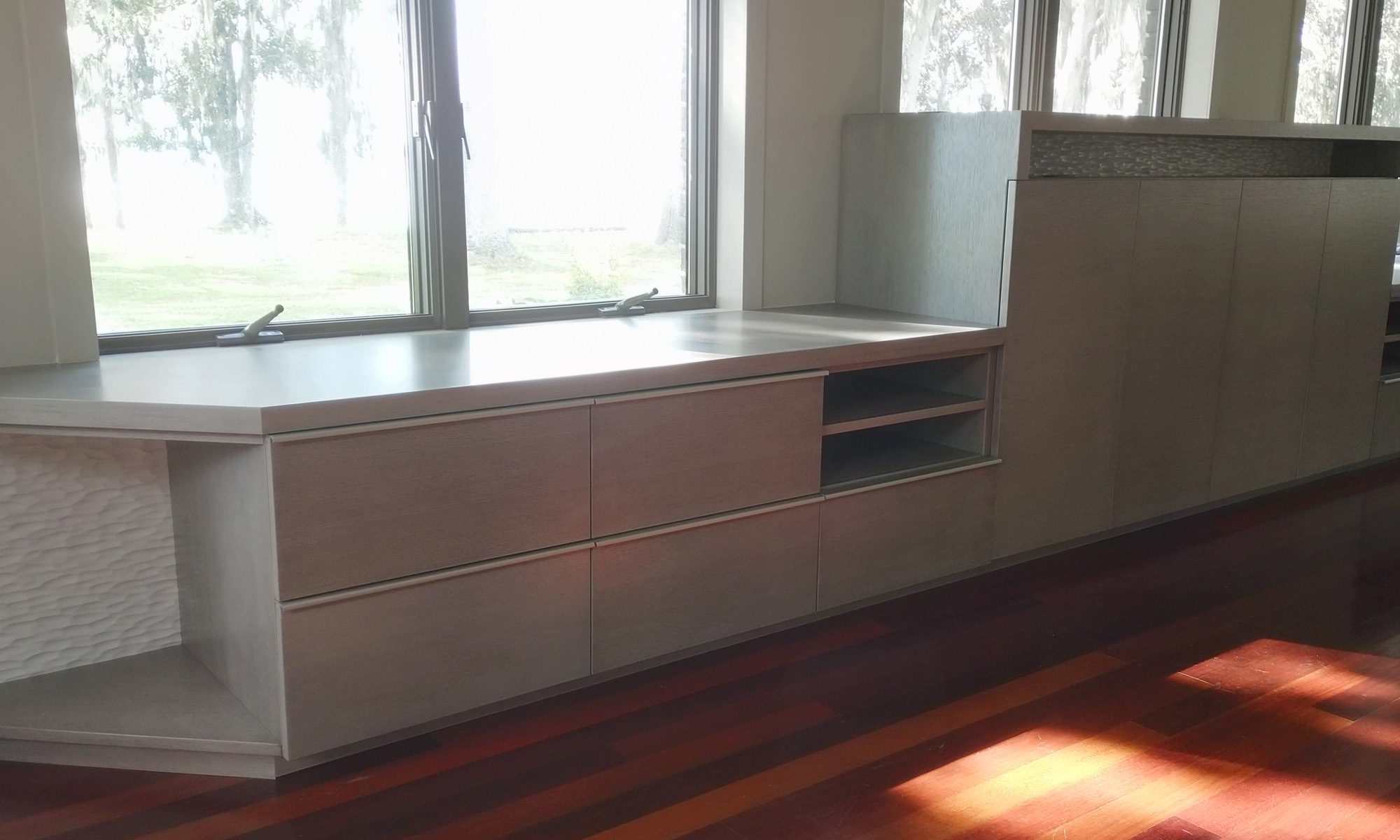A wooden mallet is very useful in the workshop and I’ve been meaning to make one for a while. To make things a bit more interesting I decided to make one with an oval handle using off center turning. An oval handle is also more comfortable to hold than a circular handle. I made this from cherry, probably not the best of woods to use as it is not the hardest of hardwoods, but it is what I had on hand at the time.
To make the head of the mallet I started with a piece of cherry just over 3″ square and about 4″ long. I turned it round between centers, turned a small tenon on one end and then mounted it in my chuck jaws. After re-truing it I turned a slight taper from the headstock side to the tailstock side.
I then drilled a 7/8″ hole in the tailstock side, about 2 1/2″ deep using a forstner bit.
I mounted a scrap piece of wood in my chuck and turned a tenon to match the 7/8″ hole I had drilled in the mallet head. I mounted the mallet on the tenon, brought the tail stock up and turned most of the end of the mallet head concave. After moving the tail stock I removed the last bit of the nub. I turned this side concave as I wanted to be able to stand the finished mallet on end with the handle up.
For the handle I used a piece just over 1 1/2″ square by about 12″ long. I measured the handle of one of my other hammers that was comfortable to use and found the maximum dimensions where 1 1/2″ by 1 1/8″. I found the center of each end of the piece that was to be my handle and marked it. I also marked a point 3/16″ either side of the center point. I calculated the 3/16″ as follows: 1 1/2″ minus 1 1/8″ equals 3/8″ (the difference between the long and short dimensions of the oval), therefore my offset needed to be half of that.
I mounted the piece between centers and turned it to 1 1/2″ round. Then I moved the piece towards the tool rest by 3/16″ using the offset marks on each end. I double checked the piece would rotate with out hitting the tool rest and then turned the piece so that it measured 1 5/16″ on the narrow side. I took my time with this as I did not need to remove much wood and I was also turning a fair amount of air.
I then moved the piece away from the tool rest and aligned it on the other marks offset 3/16″ from the center. After checking the piece could rotate freely I carefully turned it down so that it measured 1 1/8″ on the narrow side.
Now that I had established the maximum dimensions of the handle, I turned a profile on it that gave me a nice hand hold. I did this using the two offset marks in turn, again proceeding slowly and taking care not to touch the last 2 1/2″ close to the head stock.
Finally I mounted the piece on the center marks, turned the first 2 1/2″ down to 7/8″ so that it would make a snug fit in the mallet head, and finished the end of the handle before parting it off. I then glued the handle in the mallet head and once the glue had dried applied a coat of wax to the mallet.

















Thanks Keith! This is exactly what I was looking for on turning an oval handle! It’s like you read my mind!
I’m glad I could help and that you found the information useful Justin.
Well-written and good info. Thanks!
You’re welcome Bill. I’m glad you found the article useful.
Thanks for explaining the oval bit. I had heard about it elsewhere but your explanation was the first that actually got me to understand it.